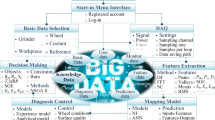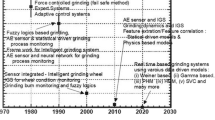Abstract
In recent years, metal-producing companies have increased their investment in automation and technological innovation, embracing new opportunities to enable transformational change. Transformation to a digital plant can fundamentally revolutionize how industrial complexes operate. The abundant and growing quantity of real-time data and events collected in the grinding and flotation circuits in a mineral processing plant can be used to solve operational issues and optimize plant performance. A grade recovery model is used to identify the best operating conditions in real time. The strategy for increasing the value of instrumentation in current plants is reviewed. An optimal Gaudin size distribution model provides augmented information from traditional sensors to find the optimal grind cut size to reduce metal losses in the flotation circuits. Sensors in flotation circuits enable an estimate of the recovery and determination of the optimal froth depth and aeration using an air hold up flotation model. A strategy of classifying data for on-line generation of insights to using operational intelligence tools is described. The implementation of a recovery/grind strategy with industrial examples in non-ferrous mineral processing is presented.














Similar content being viewed by others
References
Wills BA, Finch JA (2016) Mineral processing technology, 8th edn. Elsevier Ltd.
Bascur OA (1990) Profit-Based grinding controls, minerals and metallurgical processing, February, SME, CO., pp 9–15
Plourde M, Bascur OA, Paquet S, Gervais D (2017) Digital innovation in modern engineering and operational excellence. Presented at the 2017 SME Annual Conference and Expo, Denver, February 19–22.
Steyn J, Bascur OA, Gorain B (2018) Metallurgy analytics, transforming plant data into actionable insights, mining engineering, SME, CO.
Bascur OA, Benavides N (2013) Improving flotation grade recovery using operational data at Southern Peru Copper Cuajone, Flotation 2013, Mineral Engineering Conference, Cape Town, South Africa, Nov.
Bascur OA (2016) A journey towards a digital transformation in the process industries draft. https://pisquare.osisoft.com/docs/DOC-2935-journeydigitaltransformation-draft-c1-4-binder1pdf
Bascur OA (2018) TechCon lab a digital plant template, PI world 2018, https://pisquare.osisoft.com/videos/2503-osisoft-hands-on-lab-a-digital-plant-template-for-operational-insights-an-enterprise-strategy
Bascur OA (2019) Process control and operational intelligence in mineral and metallurgical processing. In: Chapter 10.3., SME Handbook, Englewood, CO.
Goldratt EM (1984) The goal – a process of on going improvement – theory of constraints. The North River Press Publishing Company, Great Barrington
Bascur OA (2013) A dynamic flotation framework for performance management. In: Young C, Luttrel G (eds) Separation technologies for minerals, coal and earth resources, SME , Englewood, CO.
Copper, A., 2018, Personal communication.
Ericson G, Martens J, Rohm WA. What is Azure Machine Learning Studio?, Microsoft Azure., https://docs.microsoft.com/en-us/azure/machine-learning/studio/what-is-ml-studio
Bascur OA (2011) A flotation model framework for dynamic performance management, in Procemin 2011. In: Kuyvenhoven R (ed) Gecamin, Santiago, Chile
Kelleher JD, Namee BM, D’Arcy A (2015) Fundamentals of Machine Learning For Predictive Analytics. The MIT Press, Cambridge
Raschka S (2015) Python machine learning. Packt Publishing, Birmingham
Acknowledgments
The authors acknowledge the support of OSIsoft to publish this technical paper and the participation of many people that have contributed in this over the years.
Author information
Authors and Affiliations
Corresponding author
Ethics declarations
Conflict of Interest
The authors declare that they have no conflict of interest.
Additional information
Publisher’s Note
Springer Nature remains neutral with regard to jurisdictional claims in published maps and institutional affiliations.
Rights and permissions
About this article
Cite this article
Bascur, O.A., Soudek, A. Grinding and Flotation Optimization Using Operational Intelligence. Mining, Metallurgy & Exploration 36, 139–149 (2019). https://doi.org/10.1007/s42461-018-0036-4
Received:
Accepted:
Published:
Issue Date:
DOI: https://doi.org/10.1007/s42461-018-0036-4




